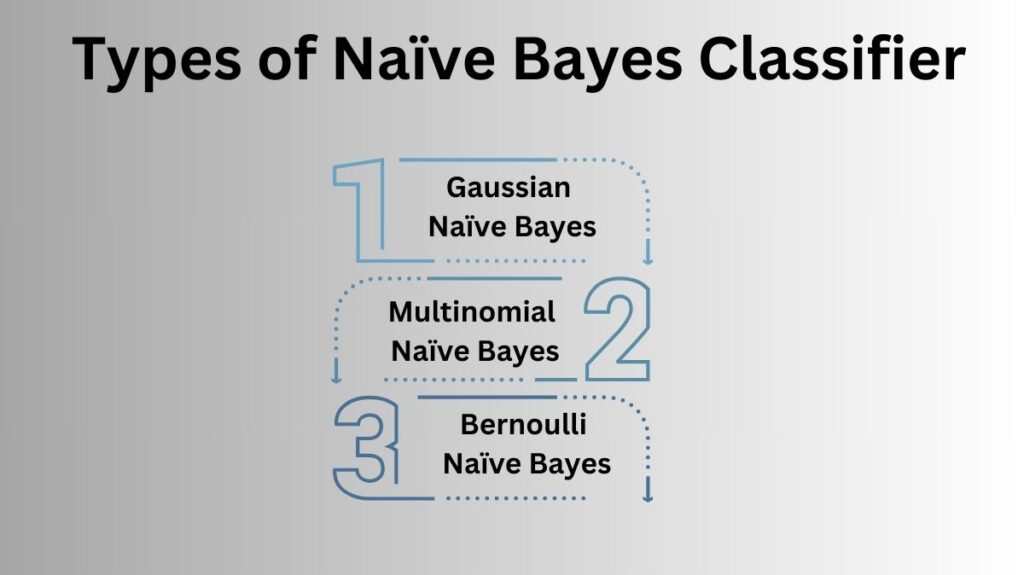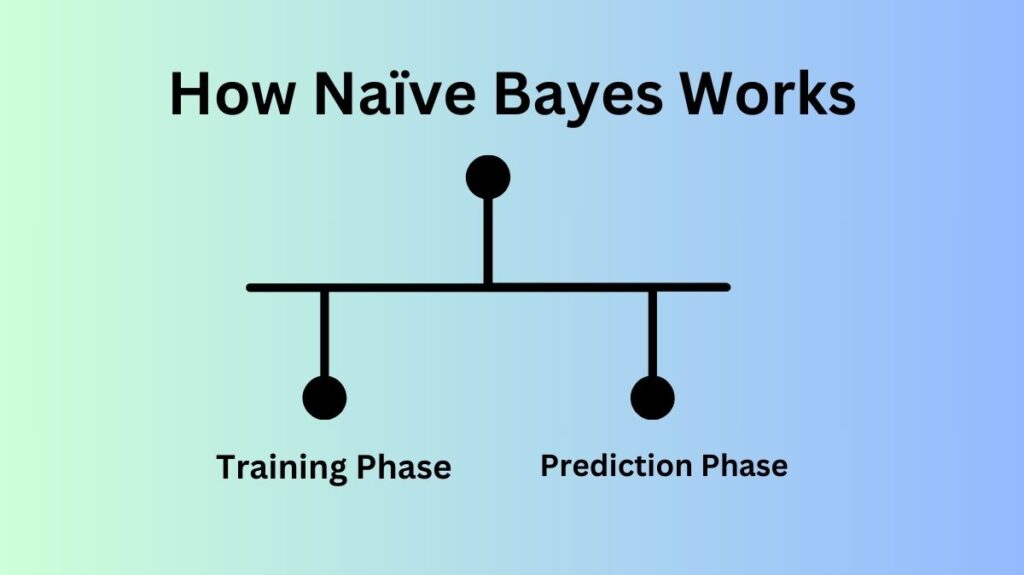In machine learning, the Naïve Bayes classifier is a basic yet effective probabilistic classification technique. When feature independence is assumed, it performs effectively in many practical situations despite its simplicity. It works well for huge datasets in text categorization, spam detection, sentiment analysis, and medical diagnosis.
Naïve Bayes Classifier Overview
Depending on Bayes’ Theorem, Naïve Bayes models the conditional probability of an event depending on prior knowledge. The classifier predicts data point class membership using this approach. Naïve Bayes relies on the “naïve” premise that all features are independent of class labels. This assumption simplifies computation, even if features often correlate. Although “Naïve” refers to a simplifying assumption that may or may not be correct, the classifier exhibits unexpected performance in real-world applications.
Essential Naïve Bayes Classifier Concepts
The Bayes’ Theorem: The Naïve Bayes classifier applies Bayes’ Theorem from probability theory to forecast event likelihood based on prior knowledge of associated variables. As such:
P(A) / P(B) = P(A|B).
Event A is more likely to happen if event B has already happened. This is shown by P(A|B). If event A has already happened, P(B|A) is the chance that event B will also happen. These odds are P(A) and P(B), respectively.
Conditional Independence Assumption: There is a part of the method called “naïve” that thinks all traits are conditionally independent based on the class label. After knowing the class label, one feature does not influence another. Treating each feature as contributing separately to the final prediction simplifies the likelihood of detecting a combination of features.
Class Prediction: Naïve Bayes calculates posterior probabilities for each class based on input information. Class with highest posterior probability is predicted. Instance with feature vector X = (x1, x2,…, xn): classifier calculates:
P(Class|X) ∝ P(Class) * P(x1|Class) * P(x2|Class) * … * P(xn|Class).
This implies the classifier calculates the chance of each data point belonging to each class based on prior probabilities and conditional probabilities of features, then chooses the class with the highest probability.
Types of Naïve Bayes Classifiers
There are three common types of Naïve Bayes classifiers, each suited to different types of data:

Gaussian Naïve Bayes:
Gaussian Naïve Bayes assumes a Gaussian (normal) distribution between features. A bell-shaped curve works well for continuous characteristics. Measurements and sensor readings are common uses.
Multinomial Naïve Bayes:
Designed for discrete data, especially counts or event frequencies. Text classification issues, where characteristics are document word or phrase frequencies, are its main use.
Bernoulli Naïve Bayes:
Used for binary features (0 or 1). The notion is that feature existence or absence is more essential than frequency.
How Naïve Bayes Works?
The Naïve Bayes algorithm works in two main phases: training and prediction.

Training Phase:
Data teaches the algorithm. For each class, it estimates the prior probability (its frequency in the training set) and likelihood. A spam email classifier may classify emails as “spam” or “not spam,” and its attributes may include specific terms.
Prediction Phase:
The model can predict fresh data points’ classes after training. Use Bayes’ Theorem to compute each class’s posterior probability for a new case. Class with highest posterior probability is predicted.
Advantages of Naïve Bayes
- Simple and Easy to Implement: The Naïve Bayes algorithm is simple and easy to implement, using minimum computational resources. Unlike neural networks and decision trees, it doesn’t require iterative training, making it faster and less resource-intensive.
- Effective for huge Datasets: Naïve Bayes excels in huge datasets with numerous features. Feature independence lets the method scale without complex optimization or tuning.
- Handles Missing Data Well: In Naïve Bayes, missing values are easily handled because to the independent calculation of probability for each feature. The likelihood model often ignores missing data features.
- Good for Text Classification: In natural language processing, Naïve Bayes is commonly used for text classification, spam detection, sentiment analysis, and document categorization. The Naïve Bayes multinomial version excels in document attributes like word counts or keyword frequencies.
- Works Well with Categorical Data: Since the algorithm treats each characteristic separately, it handles categorical data well. Categorical traits are significant in medical diagnosis and recommendation systems.
Disadvantages of Naïve Bayes
- Independence Assumption: The drawbacks of Naïve Bayes include the assumption of independence. The assumption that characteristics are conditionally independent based on class label is a key shortcoming of Naïve Bayes. Assuming characteristics are associated in real-world problems can lead to inferior performance. The independence assumption may miss the correlation between “money” and “financial” in text classification.
- Difficulty with Zero Probability: Naïve Bayes may encounter this issue. The likelihood for a feature that is missing in the training data for a class is zero, which might result in a zero posterior probability for the class. To avoid zero values, Laplace smoothing adds a little number to all probability.
- Not Suitable for Complex Relationships: Naïve Bayes, a linear classifier, may struggle with complex non-linear decision boundaries. Complex models like decision trees, random forests, and neural networks may be better for non-linear feature relationships.
- Limited Flexibility: The model’s premise of feature independence may limit its issue domains. Other models may work better for features with strong interactions.
Applications of Naïve Bayes
- Text Classification: The Naïve Bayes algorithm is commonly used for text classification tasks like spam filtering, sentiment analysis, and topic classification. When spam filtering emails, the algorithm uses word frequency to determine spam.
- Sentiment Analysis: By analyzing text words, Naïve Bayes can classify text sentiment as positive, negative, or neutral. It’s popular in social media analysis and customer feedback.
- Medical Diagnosis: In healthcare, Naïve Bayes can identify diseases using symptoms and medical data. The program can forecast a patient’s condition based on symptoms.
- Recommendation Systems: Naïve Bayes suggests products, movies, and services based on user behavior and preferences.
- Image Recognition: While Naïve Bayes is less popular than deep learning models in image recognition, it can be utilized for simple and discrete feature categorization problems.
Conclusion
The Naïve Bayes classifier is a versatile machine learning method adept at handling huge datasets, categorical characteristics, and text categorization. Although its “naïve” independence assumption may limit its effectiveness, it sometimes yields unexpected accurate results in practice. It is useful for spam identification, sentiment analysis, and medical diagnosis due to its simplicity, speed, and scalability. Mastering Naïve Bayes’ strengths and drawbacks can boost its applicability in real-world machine learning issues.
